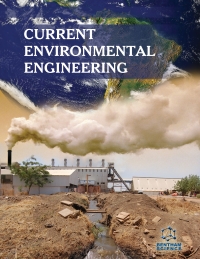Current Environmental Engineering - Current Issue
Volume 6, Issue 2, 2019
-
-
Pollution Control in Meat Industry
More LessMeat industry generates various wastes such as effluent, emissions and solid wastes that pose environmental and health problems. The effluent released from the meat industries finds its way into the natural water resources and degrade the water quality. The solid wastes of meat industry create a public nuisance by way of foul smell if it is not handled properly. The effluents, as well as solid wastes of meat industries, are po Read More
-
-
-
Artificial Light Pollution at Night: A Risk for Normal Circadian Rhythm and Physiological Functions in Humans
More LessAuthors: Pravin Kumar, Mahendra S. Ashawat, Vinay Pandit and Dinesh K. SharmaFrom the past three to four decades, ecologists and scientists have exhaustively studied the effect of increased artificial light pollution at night on the ecological and physiological behavior of mammals. The Suprachiasmatic Nuclei (SCN) or master clock in the brain of mammals including humans synchronizes the physiological functions with the light: dark cycle. The prolongation of light period in the light: dark cycle disrupt Read More
-
-
-
Removal of Phenol from Organic System by Using Ionic Liquids
More LessAuthors: Ciji S. Mathews, Vikas K. Bhosale, Prashant S. Kulkarni and Sanjay P. KambleObjective: Selective removal of phenol from organic solvent mixture (benzene + toluene + hexane) or other petroleum by-products have a major concern. Hence, the experiments were conducted on the removal of phenol from synthetically prepared phenolic organic waste by using a green process, ionic liquids. Methods: The ionic liquids, 1-ethyl-3-methyl imidazolium cyanoborohydride, and 1- butyl-3-methyl imidazolium hex Read More
-
-
-
Development of Graphene Oxide-Trihexyphenidyl Hydrochloride Nanohybrid and Release behavior
More LessAuthors: Pradip M. Jawanjal, Pritam B. Patil, Jayesh Patil, Mrunal Waghulde and Jietndra B. NaikBackground: The demand of an efficient nanocarrier in drug delivery, graphene and its derivatives are emerging as a rising star due to its remarkable chemical and structural properties. Objective: Graphene oxide (GO) has high surface area and ability to load high amount of aromatic drugs. Hence, the objective of the research was to load Trihexyphenidyl hydrochloride (THP), antiparkinsonian drug on GO ultrasonically Read More
-
-
-
Analysis of Heavy Metals in Soil and Sediments Along the Bank and Bed of River Benue in Taraba State Nigeria
More LessAuthors: Garvunga G. Yebpella, Nwunuji H. Baba, Asabe M. Magomya and Raphael OdohBackground: Atomic Absorption Spectroscopic (AAS) method is most commonly being used due to its reproducibility of results, short analysis time, cost effective, lower level detection and hyphenated in nature. Aims: The concentrations in mg/kg of six heavy metals of environmental implications which includes Cd, Cu, Fe, Mn, Pb and Zn were determined by Atomic Absorption Spectrophotometer PG Instrument Model AA090M046. Read More
-
-
-
CFD Investigation of Air Flow Patterns and Thermal Comfort in a Room with Diverse Heating Systems
More LessAuthors: Mohammed Sobhi and Essam E. KhalilObjective: The main focus in the current work is to investigate how diverse heating systems and their locations influence the indoor thermal environment in an exhaust- ventilated room. Methods: Four systems for heating the room were used in the current study, in which, heat was transferred by convection and radiation. The four systems were: wall and floor heating at low temperatures, Medium Temperature Radi Read More
-
-
-
Application of Calophyllum Inophyllum Seed Husk as a Low-cost Biosorbent for Efficient Removal of Heavy Metals from Wastewater for a Safer Environment
More LessAuthors: Adeniyi A. Adenuga, John Adekunle O. Oyekunle and Olufemi D. AmosBackground: Effective treatment of wastewaters for potentially toxic metals especially at affordable cost is critical to the well-being of man and the environment. Objective: This study optimized the conditions for the application of Calophyllum inophyllum seed husk as biosorbent for simultaneous removal of heavy metals from aqueous solutions and investigated the removal efficiencies of the biosorbent for Pb2+ and Cd2+ in wast Read More
-
Most Read This Month Most Read RSS feed
Article
content/journals/cee
Journal
10
5
false
en


